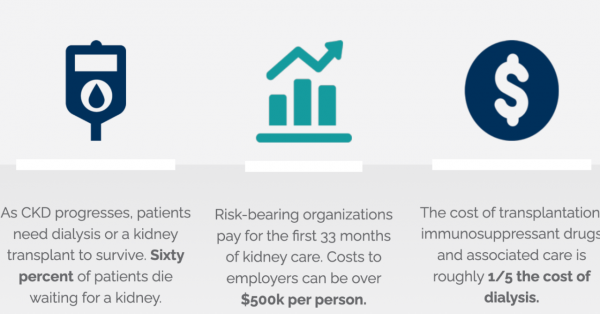The ABCs of ESRD: What benefits directors don’t realize about chronic kidney disease

There comes a time when a patient with chronic kidney disease must receive dialysis or a kidney transplant to survive. This stage, known as end-stage renal failure or ESRD, is the final, permanent stage of chronic kidney disease.
Chronic kidney disease progresses from stage 1 to stage 6, increasing in its severity. While patients in stages 1 through stage 3 may not experience symptoms, patients in stages 4 and 5 are increasingly sick to the point where their kidneys cannot function on their own. As the disease progresses, patients may experience a wide variety of symptoms, such as drowsiness, dry or itchy skin, easy bruising, fatigue, headache, inability to urinate/decreasing urination, nausea and weight loss.
While many patients can make treatment and lifestyle changes that can delay or prevent progression to ESRD or stage 6 kidney disease, most patients don’t even know they have kidney disease. Once a patient experiences ESRD, the kidneys can no longer filter the body of waste and extra fluid. Patients must pursue dialysis, in which they are hooked up to a machine several times a week to take over the role of the kidneys. Alternatively, patients can be treated with a kidney transplant and avoid dialysis altogether. These treatment options are far from equal, however, as kidney transplant recipients are not only healthier than those on dialysis, but also live an average of ten years longer.
Most benefits managers focus on negotiating a lower cost for dialysis per treatment and don’t realize they’ve done nothing to improve the quality of life for the people covered by the plan. Benefits directors owe it to their colleagues to learn more about the benefits of kidney transplantation, including ways to identify kidney failure patients early and get them transplanted faster.
Connect with our team to find out how Rejuvenate can help navigate the confusing and often frustrating path to transplant to help you cut health care costs and get your colleagues back to living life to the fullest. It’s time to take the first steps toward helping your people regain their health and independence.

